Lecture
Eye-tracking ,
Electroencephalography (EEG),
Evaluation of the emotional state of facial expressions,
Content linguistic and cognitive-psychological analyzes of texts,
Implicit associative tests
Measurement of heart rate variability.
What tasks can solve neuromarketing research:
Checking the effectiveness of advertising - television, print, radio, or packaging.
Obtaining objective sensory information about the product - visual attention, taste and smell.
The study of the behavior of the buyer in the real conditions of the store, restaurant, bar and other places of interaction with the product.
The study of the perception of the buyer brand.
Usability design - both web pages and industrial design.
What types of advertising we work with:
Printed products,
TV advertising,
Web sites,
Magazines,
Product packaging,
Outdoor advertising,
Computer games
As well as products or their components / parts.
Optimize visual communication
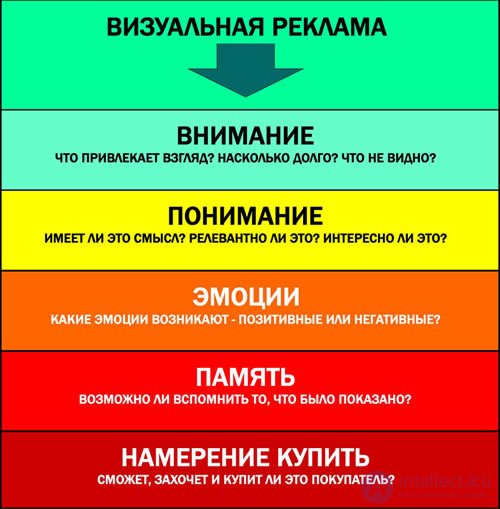
Measurements of visual behavior and emotional involvement make it possible to draw up strategic and tactical recommendations on how to optimize and design the effectiveness of visual communication. As a result, the key message of the advertisement reaches the target group.
We can work at any stage of advertising production: define a target group, create a design for experimental research of advertising, collect quantitative and qualitative data, and create a report with practical steps to improve advertising.
Eye tracking method. Eye tracking
Eye movement tracking is a technology that allows you to determine the direction and sequence of eye movement, the duration of the eye and other characteristics. The method allows to observe and evaluate attention and emotional involvement objectively and without external influence. This means that we can get results without relying on the subjective answers of respondents and without affecting people's behavior.
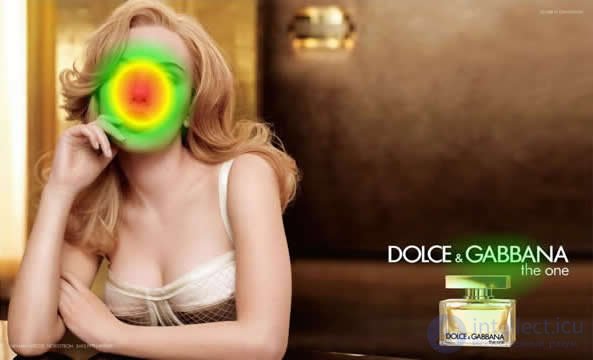

An example of print advertising and one of the types of analysis. The photo shows the so-called thermal maps of attention - the duration and frequency of views of a large number of respondents. You can easily compare the amount of attention spent by the audience on the face of Scarlett Johansson and the advertised object. Will this advertisement be remembered and will it encourage a potential client to buy?
Questions that can be answered using the eye movement method:
Where does attention initially focus and where does it stop when viewing an advertisement? How strong is the emotional involvement of the consumer? On which object is the consumer’s view the longest, and which object does it ignore? Which text conveys information efficiently, and which one goes unnoticed, and why?
Advantages of the method:
Objective data - measured by subconscious processes.
Visual information , which is responsible for 80-90% of all incoming information.
Measurable data that can be processed by statistical programs using various types of analysis.
High testing speed , ease of application and lack of pressure on the respondent.
Visibility of the results .
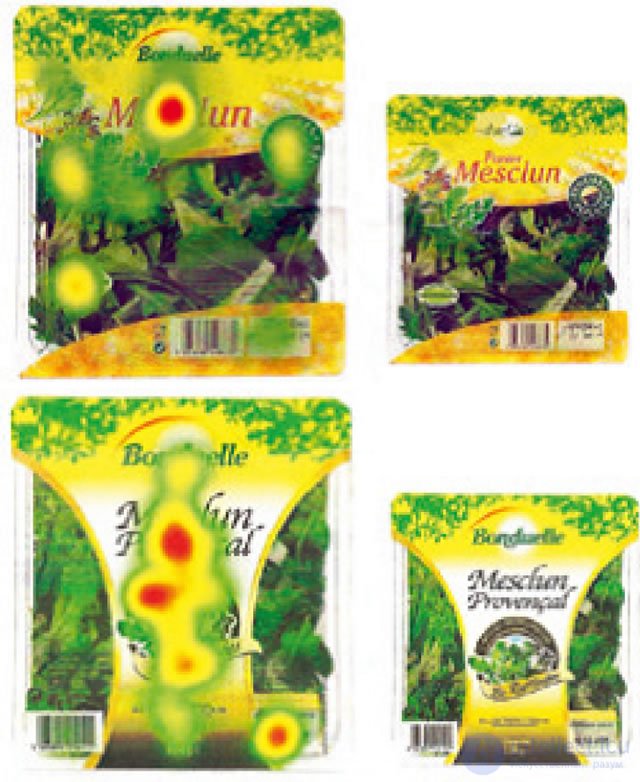
The photo above shows how the change in packaging attracts attention and increases the gaze time, both on the information unit and on the brand. This predictably leads to an increase in the desire to purchase a product, and remember the brand. In this case, sales of goods in new packaging increased by 15%.
Analysis of the emotional response using EEG
Measurements of the electrical activity of the brain allow you to register the person’s objective emotional responses to a product, advertisement or design.
Our brain perceives, processes and interprets the incoming information every millisecond. The overwhelming majority of these processes occur unconsciously, and are consciously inaccessible to us. However, the results of such activities are quite measurable in human behavior. Subjective assessment of a person often does not correspond to subsequent behavior. As they say, we think one thing, but act differently. In addition, people rationally rationalize their behavior, explaining its causes, which are unknown to us in reality.
These subconscious processes can be measured by EEG and reflected in increased or decreased brain activity in certain regions. EEG readings demonstrate perfectly whether we like what we are looking at or not. According to the EEG, we can with a high probability predict his behavior of choice and decision-making. EEG allows you to do it all unobtrusively, in real time and measurable.
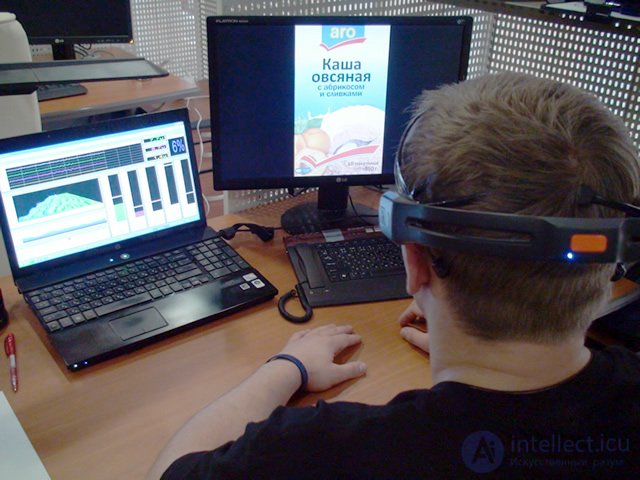
In the photo above: use Emotiv EEG to record reactions to the packaging of goods. During the test, the respondent looks at a large number of images, repeated in a random order, with a fixed display time, to collect a large amount of data.
Using EEG, we measure:
Excitement (long-term and short-term).
Psychophysiological arousal, which can be registered in the brain, is also manifested in heart rhythm, dilated / constricted pupils and stimulation of sweat glands. This can manifest itself as short-term, in response to some kind of stimulus, as well as long-term, as an indicator of the general condition.
Involvement.
In order for the object to attract our attention and to be stored in memory, it must engage us in emotional and meaningful communication. This is expressed in the attention span, which means extensive involvement of brain resources.
Disappointment.
Measuring the level of frustration in the course of communication with the object - advertising products or goods, allows you to track the occurrence of negative attitudes and experiences. This can create undesirable associations with the object and be deposited in the long-term memory of a person. Frustration is strongly correlated with anger, anger, sadness, and can help avoid design mistakes.
Linguistic and cognitive-psychological content analysis
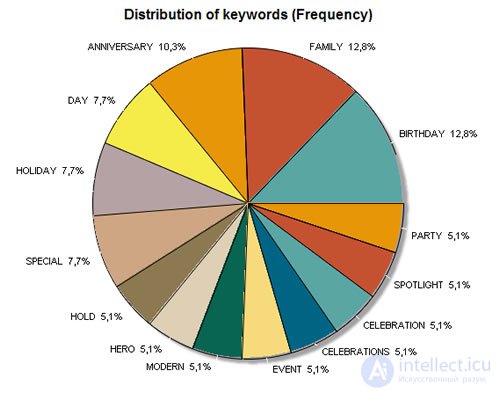
Allows you to learn a lot about the text of such that is hidden from the eyes, in the use of categories of words, pronouns, the use of tenses of verbs, service particles of speech, etc.
This analysis realistically determines what the text is about. Often our understanding of our text and its analysis speak of different meanings.
The method also allows you to determine how attractive and clear the text is to different age groups; allows you to see hidden negative emotions, lack or excess of sensual information and categories of perception; text style characteristics.
The text can be written perfectly, but in terms of its style, it is suitable for a scientific article (or is typical for colloquial speech), rather than for packaging goods.
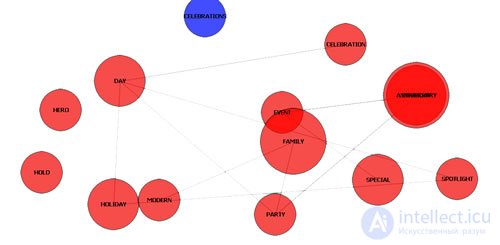
Allows you to see the presence / absence of contradictions, logic and meaning of the message.
Call to action - is it there, and why? Text writers may not see what behavior they can initiate in the reader.
The method allows specific recommendations - both in style and in changing specific phrases and words.
Comments
To leave a comment
Neuromarketing
Terms: Neuromarketing